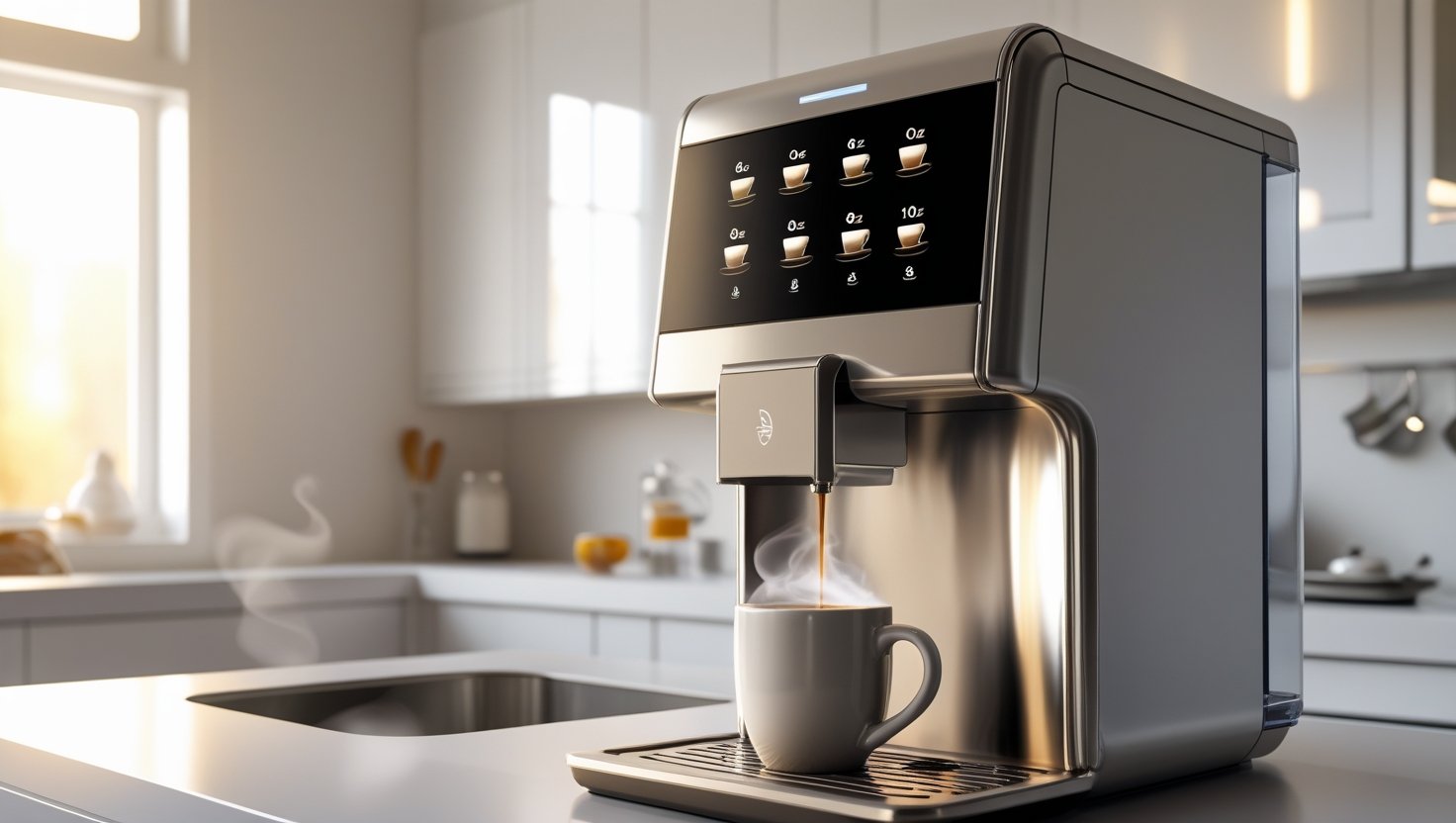How Many Ounces Are in a Cup of Coffee?
The Answer Isn’t What You Think

☕ The Confusing Morning That Sparked This Question
You wake up, groggy and half-zombie, and reach for your favorite coffee mug. You pour from your drip machine and think, “One cup down!” But is it? Ever found yourself asking, “How many ounces are actually in a cup of coffee?” Especially when your recipe says “use 1 cup of water,” but your coffee maker seems to measure it differently?
You’re not alone. This seemingly simple question has a surprisingly layered answer — especially when coffee makers, measuring cups, and mugs all play by different rules.
Let’s get to the bottom of it.
So, How Many Ounces Are in a Cup of Coffee?
The answer depends on who’s asking:
| Measurement System | 1 “Cup” Equals |
|---|---|
| U.S. Standard Cup | 8 fluid ounces |
| U.S. Coffee Maker “Cup” | 5 to 6 fluid ounces |
| Metric System | ~250 milliliters (~8.45 oz) |
| U.K. Cup | 10 imperial ounces |
👉 In the context of coffee, most machines and baristas use 5 or 6 ounces to define 1 cup — not 8 ounces.
Yes, it’s a little frustrating. Let’s unpack why.
Why the Coffee Cup Isn’t 8 Ounces
In cooking, we’re taught that 1 cup = 8 fluid ounces. But coffee breaks the rules.
Most automatic drip coffee makers in the U.S. label each “cup” as 5 or 6 ounces. This comes from traditional coffee-serving sizes, where a “cup” wasn’t meant to fill a full mug but rather a small serving of brewed coffee — think European espresso culture or dainty after-dinner cups.
⚠️ Confused? You’re not the only one. The coffee industry has adopted its own measurement standard for “cups” — and it’s stuck.
Here’s How It Breaks Down by Device
1. Drip Coffee Makers
Most brands define a cup as 5 to 6 ounces. So, if your machine says it makes “12 cups,” you’re really only getting about 60–72 ounces of coffee — or 7–9 standard mugs.
2. French Press
A typical 8-cup French press holds about 34–36 ounces, which comes out to roughly 4.5 standard mugs.
3. Keurig and Pod Brewers
Keurigs let you choose the brew size — typically ranging from 6 oz to 12 oz. This is closer to what modern coffee drinkers consider a real “cup.”
4. Espresso Machines
Espresso isn’t served by the cup but by the shot. A single shot = 1 ounce, a double = 2 ounces.
Coffee Mug Size vs Coffee Cup
Here’s the twist — most people drink coffee from mugs, not cups. And mugs are usually:
-
10 to 12 ounces for a regular mug
-
16+ ounces for a travel mug or large café latte
That means a standard coffee maker’s “1 cup” won’t even fill half your favorite mug.
☕ Pro tip: When a recipe calls for “1 cup of coffee,” check if it means a full 8 oz, a standard mug, or just one 6-oz brewed “coffee cup.”
Why Does It Matter?
Understanding cup-to-ounce ratios matters for:
-
Measuring your water-to-coffee ratio correctly
-
Adjusting caffeine intake based on how much you’re actually drinking
-
Brewing consistency (so every cup tastes like the last)
-
Diet tracking, if you count calories or macros
Ideal Coffee Ratios (Using the “Golden Ratio”)
The Golden Ratio for coffee is about 1 to 2 tablespoons of ground coffee per 6 ounces of water.
Here’s a quick cheat sheet:
| Brew Size | Ounces | Coffee Needed (TBSP) |
|---|---|---|
| 1 cup | 6 oz | 1–2 tbsp |
| 2 cups | 12 oz | 2–4 tbsp |
| 4 cups | 24 oz | 4–8 tbsp |
| 8 cups | 48 oz | 8–16 tbsp |
☕ Need precision? Weigh your grounds: 10 grams per 6 oz of water is a good rule of thumb.
Is a Coffee Cup the Same Worldwide?
Not really. Let’s look at a few global takes:
📍 United States
-
Coffee “cup” = 5–6 oz in appliances
-
Standard “cup” = 8 oz in recipes
📍 Canada
-
Uses metric, but coffee machines often still define “cup” as 5–6 oz
📍 Japan
-
Follows a 6.7 oz (200 ml) definition for 1 cup of coffee
📍 U.K.
-
May follow imperial (10 oz) or metric (250 ml) depending on the device
Quick Fixes to Avoid Confusion
-
✅ Check your coffee maker’s manual — it likely says how many ounces per cup it uses
-
✅ Use a measuring cup to see how much liquid your machine brews per cycle
-
✅ Mark your mug discreetly with a Sharpie line showing 6 oz for easy visual reference
-
✅ Use a kitchen scale and brew by weight — it’s the most reliable method for consistent coffee
How Coffea Alchemy Approaches the Perfect Cup
At Coffea Alchemy, we understand that brewing great coffee is both an art and a science. That’s why we focus on education — not just about beans and roast levels, but also the often-overlooked details like brew ratios and volume measurements.
Because getting your “cup” right means getting your coffee right.
Final Thoughts: Think Beyond the Cup Label
So, the next time someone says “a cup of coffee,” remember: that could mean 5 ounces, 8 ounces, or even 16 ounces depending on the context. But now that you know the difference, you can brew more precisely, enjoy better flavor, and never again be confused by what your coffee maker claims.
Now the only question is: How many ounces do you think your “perfect cup” should be?
Related Post
Our newsletter
Subscribe to our weekly newsletter & keep up with our latest recipes and organized workshops. You can unsubscribe at any time.

